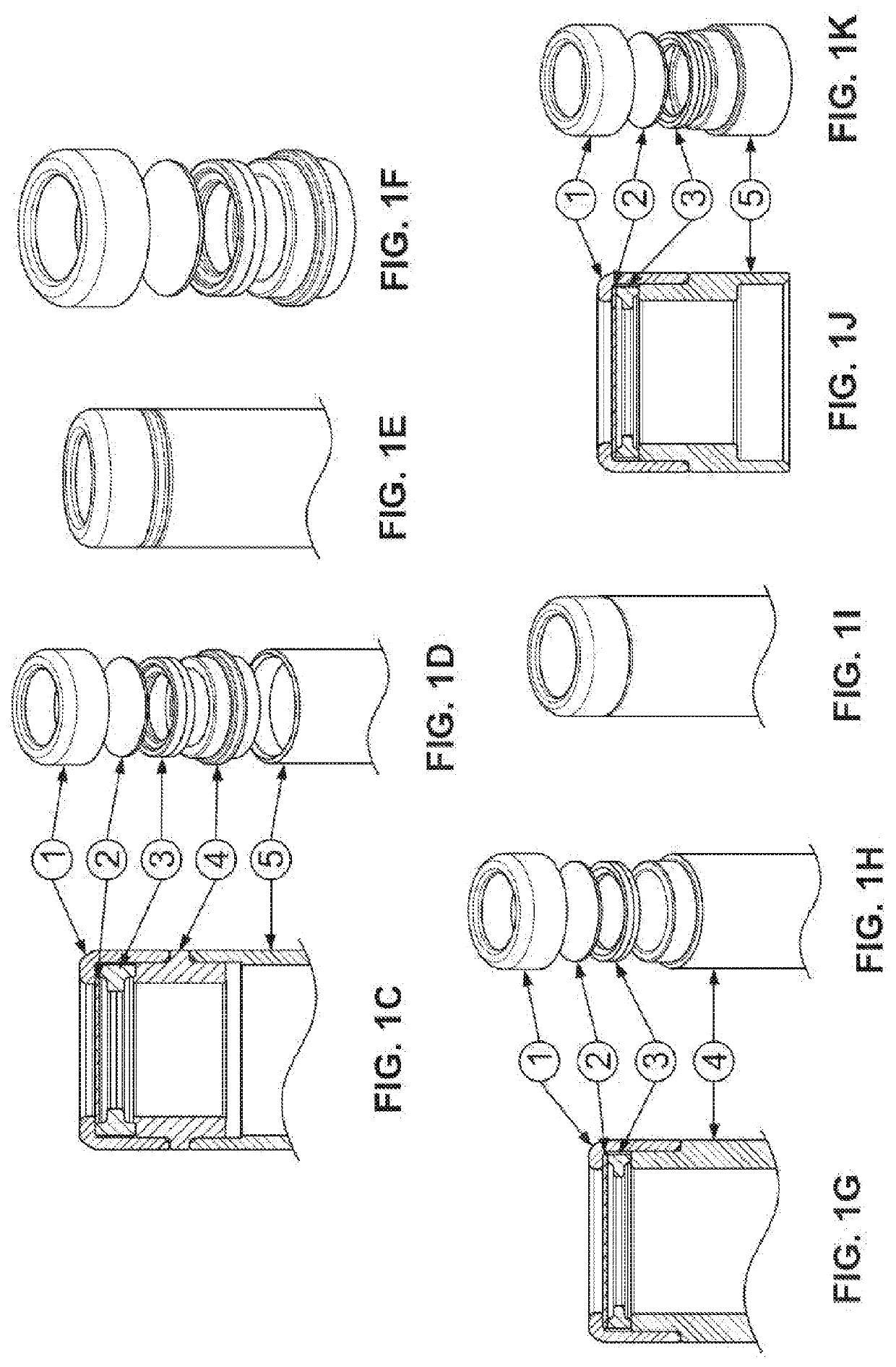Compositions of opioid antagonists, implant devices, and treatment methods for opioid use disorder
a technology of opioid antagonists and implant devices, which is applied in the composition of drug components, other medical devices, inorganic non-active ingredients, etc., can solve the problems of poor medication adherence in oud patients, low long-term patient retention rate, and addictiveness of most opioid drugs used to manage pain
- Summary
- Abstract
- Description
- Claims
- Application Information
AI Technical Summary
Benefits of technology
Problems solved by technology
Method used
Image
Examples
example 1
Formulation Comprising Naltrexone as a Small Molecule Therapeutic Agent and an Organic Acid
[0128]Naltrexone base was compounded with anisic acid at acid:drug ratios of 0:1 or 1.1 (molar basis), tableted with polyvinylpyrrolidone as a binder and stearic acid as a lubricant (12% and 2% of the final formulation mass, respectively), and loaded into delivery devices equipped with 0.1 micron polyvinylidene fluoride (DURAPORE®) membranes. In a subset of devices, approximately 75% of the available membrane surface area was blocked to measure the influence of surface area upon output rate. All devices were vacuum back-filled with phosphate buffer and transferred to jars containing a volume (˜100 mL) of the same buffer. The sealed jars were then incubated at 37° C., and small aliquots (˜500 μL) of receiving buffer were withdrawn at selected time points to quantify the released drug by high pressure liquid chromatography (HPLC). Release of naltrexone is shown in FIG. 2.
example 2
Dry Formulation Comprising Naltrexone Base and an Organic Acid
[0129]Compressed pellets were prepared from mixtures of naltrexone base, an organic acid excipient, polyvinylpyrrolidone (12% by mass as a binder) and stearic acid (2% as a tablet press lubricant). The organic acid excipients were p-anisic acid or p-aminobenzoic acid, in the formulation at a mole ratio or 25%, 50%, or 100% relative to naltrexone (0.25:1, 0.5:1 and 1:1 organic acid:naltrexone mole ratios). Compressed tables of naltrexone base, PVP and stearic acid were prepared as a control.
[0130]Drug delivery devices with a 0.1 micron polyvinylidene fluoride (DURAPORE®) membranes and as depicted in FIG. 1 were filled with the compressed pellets (n=3). The in vitro release of naltrexone was measured following the process of Example 1. Results are shown in FIG. 3.
example 3
Dry Formulation Comprising Naltrexone Base and an Organic Acid
[0131]Compressed pellets were prepared from a mixture of naltrexone base, p-anisic acid, polyvinylpyrrolidone (12% by mass as a binder) and stearic acid (2% as a tableting lubricant). The acid excipient was combined with naltrexone in a mole ratio of 1:1.
[0132]Prototype devices were prepared by loading cylindrical reservoirs with pellets (approximately 320 mg / device). These were then capped at each end with 0.1 micron polyvinylidene fluoride (DURAPORE®) membranes as depicted in FIG. 1. Prototype devices were terminally sterilized and implanted into male Sprague-Dawley rats (n=5). Plasma samples and animal weights were obtained at protocol-prescribed time points over a period of approximately 100 days, and plasma concentrations of naltrexone were obtained by liquid chromatography / mass spectroscopy. Results are shown in FIG. 4.
[0133]Devices recovered from experimental animals were subjected to mass balance analysis. Residua...
PUM
| Property | Measurement | Unit |
|---|---|---|
| molar mass | aaaaa | aaaaa |
| solubility | aaaaa | aaaaa |
| solubility | aaaaa | aaaaa |
Abstract
Description
Claims
Application Information
 Login to View More
Login to View More - R&D
- Intellectual Property
- Life Sciences
- Materials
- Tech Scout
- Unparalleled Data Quality
- Higher Quality Content
- 60% Fewer Hallucinations
Browse by: Latest US Patents, China's latest patents, Technical Efficacy Thesaurus, Application Domain, Technology Topic, Popular Technical Reports.
© 2025 PatSnap. All rights reserved.Legal|Privacy policy|Modern Slavery Act Transparency Statement|Sitemap|About US| Contact US: help@patsnap.com



